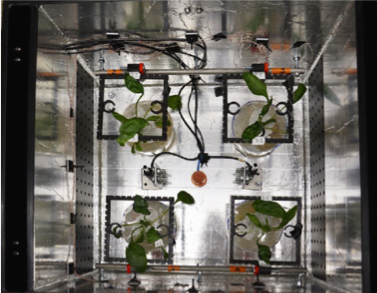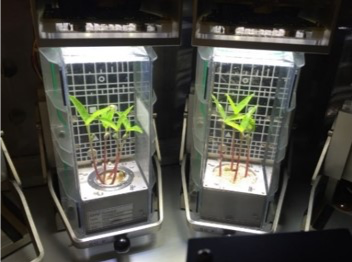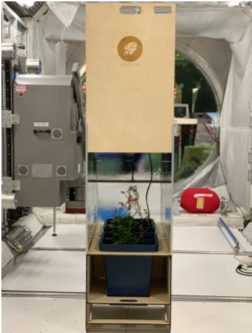PlAnt Characterization Unit for closed life support system - engineering, MANufacturing & testing, a new plant chamber Unit (PCU)
Objectives
The Higher Plant Compartment is one of the most complex compartments of the MELiSSA loop and requires dedicated research infrastructures in order to study, characterize and mathematically model the plant development and crop production. Such infrastructure used for crop characterization is called PaCMAN Unit. This unique facility was conceived as an environmentally controlled and leak-proof system for scientific studies on various crops. Among others, detailed studies on water transfer in-within-out the plant are enabled by allowing discrimination of aerial zone and root zone.
CHALLENGES AND APPROACH
Thanks to its multifunctional nature, within the MELiSSA loop, the crop contributes to the water recycling, air regeneration and food production, with a concomitant production of wastes (i.e. the non-edible part of the crop). Such contributions are highly variable from crop to crop. The closure of the MELiSSA loop requires then:
a) a careful selection of the crops
b) a detailed knowledge of the dynamics of these functions
c) the quantitative inputs/outputs at the crop scale, as well as at the higher plant compartment scale
Past activities on this topic, demonstrated the need to develop specific research infrastructures (both for crop studies and food processing studies) and to perform defined research programmes. The PaCMAN Unit is paving the way for such research programmes.
FLIGHT EXPERIMENTS
In the absence of gravity, natural convection does not occur. Consequently, the gas and water exchanges (i.e. result from the plant physical processes) between a plant and its environment are significantly impacted.
Within the MELiSSA Project, two micro-gravity experiments, ANTHEMS and WAPS, have been conceived to study this aspect.

While ANTHEMS experiment focuses on the transpiration process at the leaf level (i.e. out the plant), WAPS experiment focuses on the whole water transport system (i.e. in-within-out).
Anthems was flown twice on NOVESPACE A310 ZEROG Aircraft and WAPS is currently planned to be accommodated on-board the International Space Station in 2022.

TERRESTRIAL APPLICATIONS
The outputs of Space-related research programmes can be applied for plant cultivation in extreme environments on Earth within the global objectives of maximizing the use of resources efficiently and to achieve sustainability.
EDUCATION AND COMMUNICATION
Science, technology, engineering and mathematics (STEM) activities are promoted through hosting and supervising next generation researchers (PoMP program) as well as contributing to various education projects such as MULTITROP and AstroPlant (education kit for crop basic modelling).
